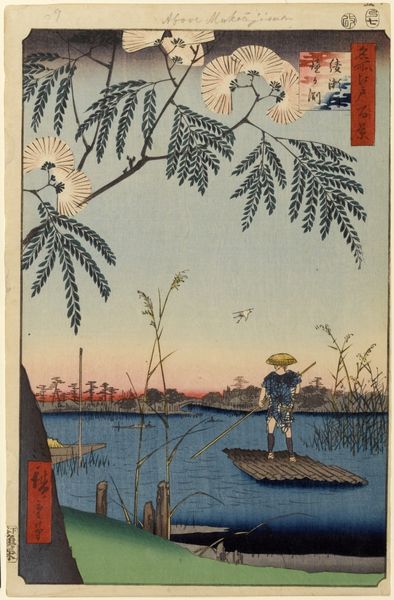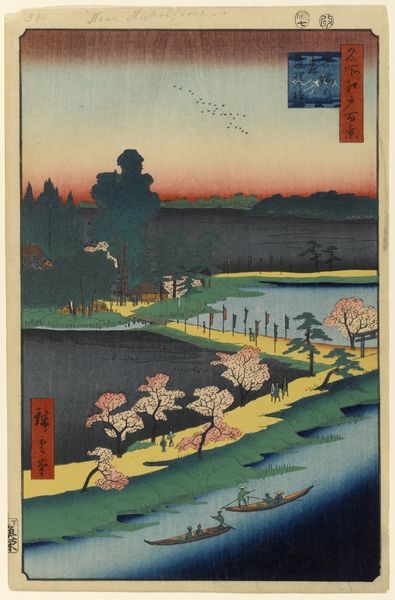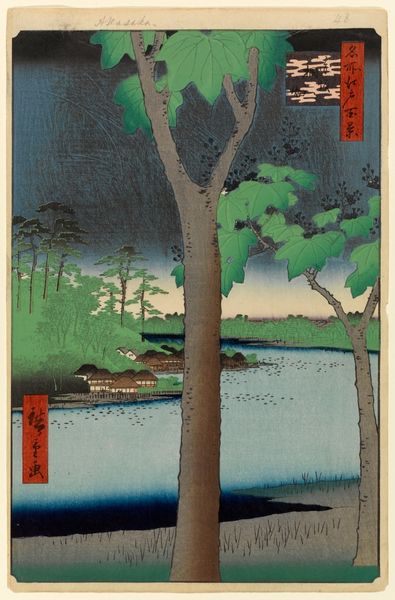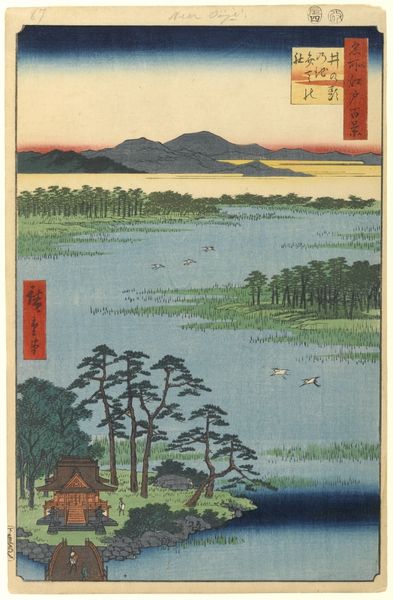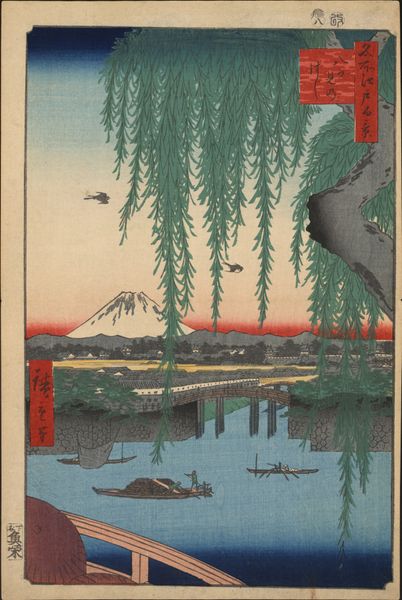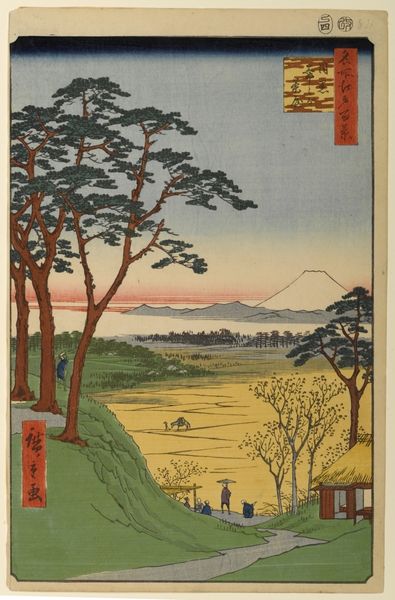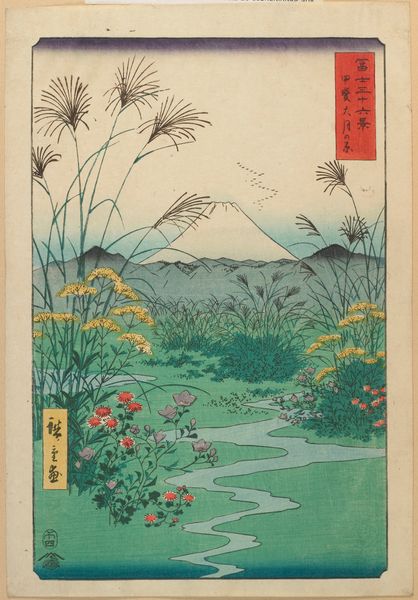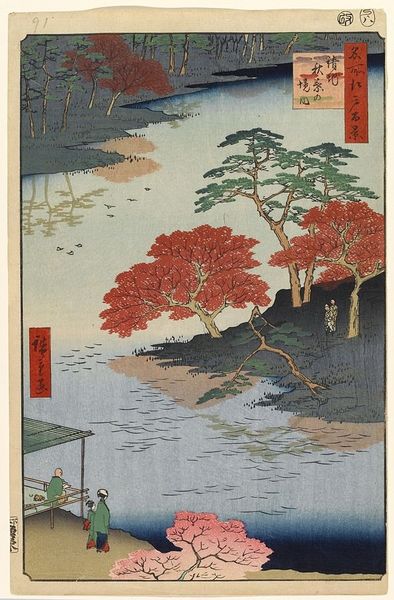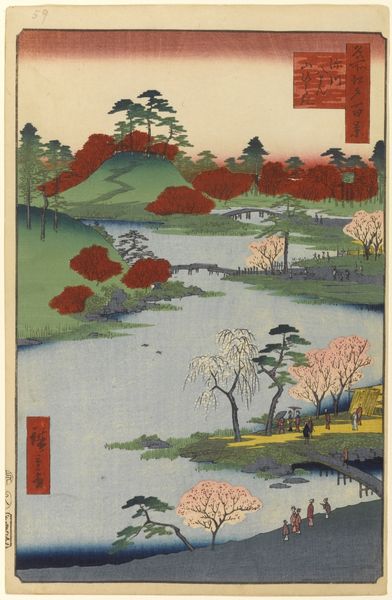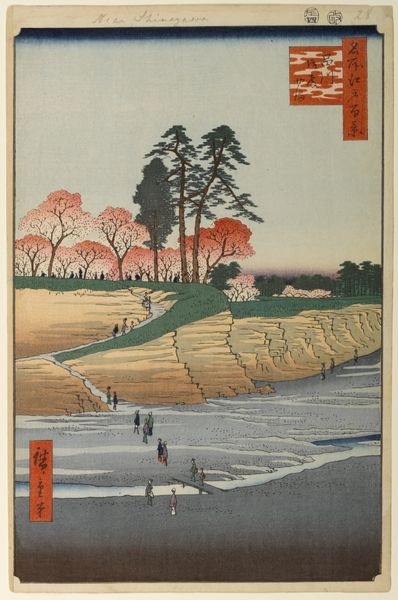
Copyright: Public domain
Editor: This is "The Maple Trees at Mama, the Tekona Shrine and Tsugihashi Bridge" by Utagawa Hiroshige, made in 1857. It's a woodblock print. It has a wistful, almost melancholic feeling, maybe because of the muted colors and the framing. What do you see in this piece, beyond the immediate landscape? Curator: I see a powerful commentary on the transient nature of beauty and, more profoundly, on cultural identity during a period of rapid societal change. Hiroshige, through the Ukiyo-e tradition, wasn't just depicting a picturesque scene; he was capturing a fleeting moment in time amidst the burgeoning forces of modernization that were impacting Japanese society. How might the accessibility of these prints, in a sense the mass media of the time, shape public perceptions of their changing world? Editor: That’s interesting, I hadn’t thought about it that way. It's easy to just see it as a pretty landscape. The leaves in the foreground do kind of create a border though. Curator: Exactly, consider those maple leaves. They are a carefully constructed barrier and window simultaneously. They act as a filter, suggesting how memory and tradition mediate our experience of the present. Moreover, remember the political context of the Edo period. This controlled access to nature might also mirror restrictions on movement and expression that were a feature of the time. Does this shift your perception? Editor: It does, actually. Thinking about those restrictions makes me reconsider the seemingly idyllic scene. It adds a layer of complexity I didn't appreciate at first. So, it's not just about nature but about the experience of it within a specific social structure. Curator: Precisely. By examining Hiroshige’s work through this lens, we understand how art can be a powerful means of social commentary and resistance, even when cloaked in beauty. Editor: That gives me a lot to think about. I see so much more than just trees and a bridge now. Curator: Me too! This pushes us to question our own filters, how we choose to see the world, and how history shapes that vision.
Comments
No comments
Be the first to comment and join the conversation on the ultimate creative platform.
